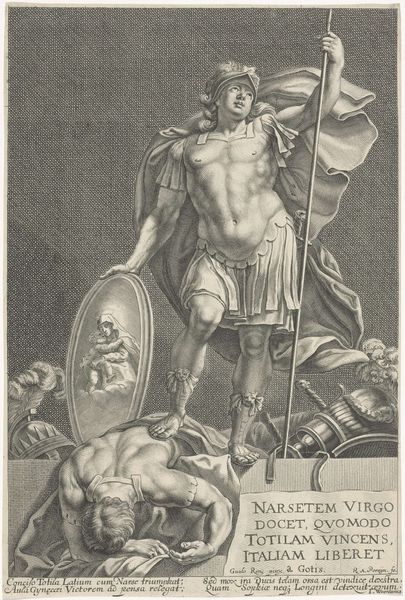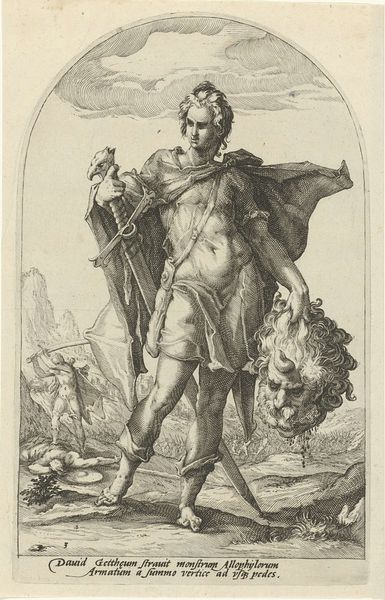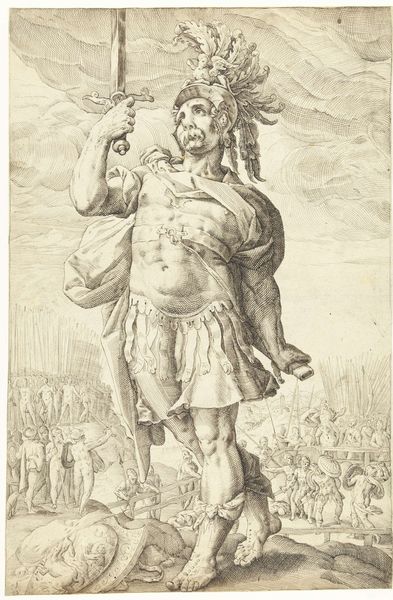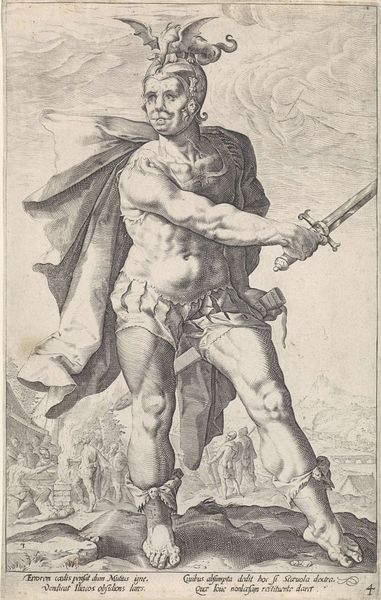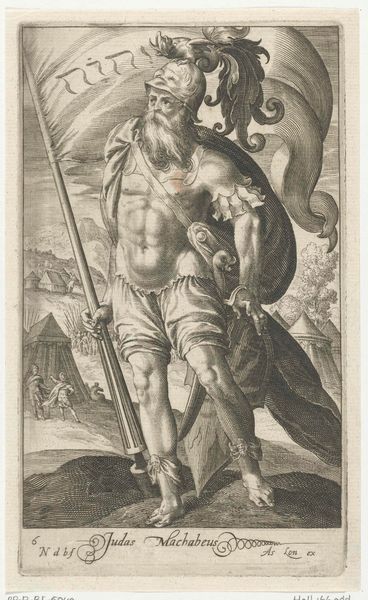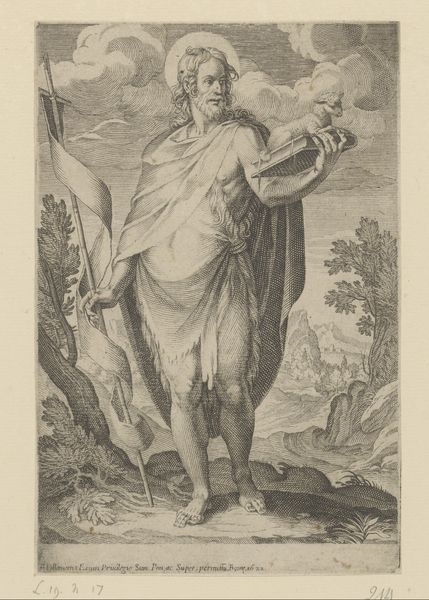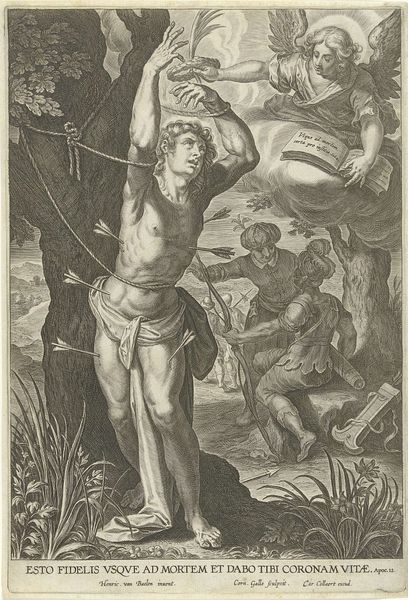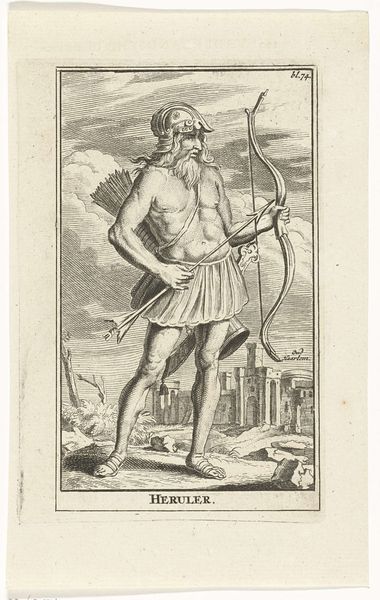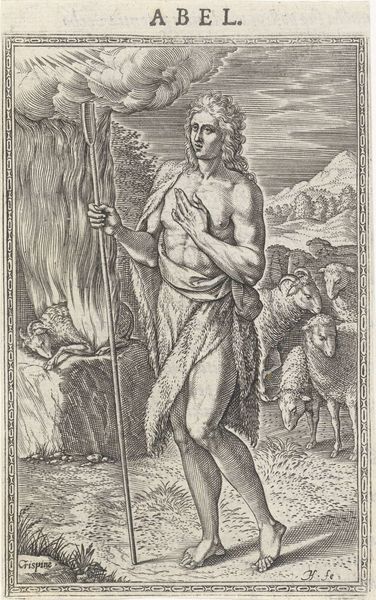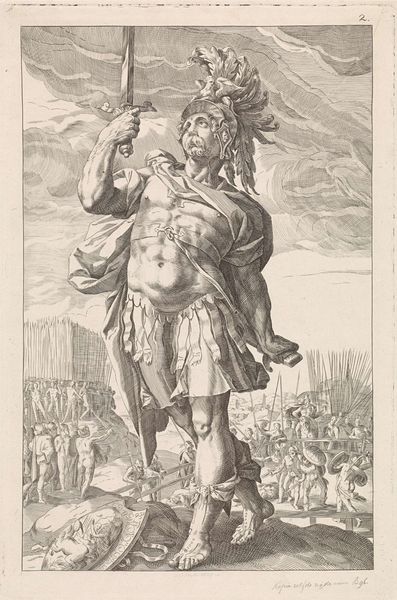
print, engraving
#
portrait
#
pencil drawn
#
baroque
# print
#
pencil sketch
#
figuration
#
pencil drawing
#
pen-ink sketch
#
portrait drawing
#
history-painting
#
engraving
Dimensions: height 316 mm, width 218 mm
Copyright: Rijks Museum: Open Domain
Curator: Let's dive into this print, "Grieken - Alexander de Grote," created by Jeremias Falck in 1644. It's an engraving that presents a very stylized Alexander the Great. What strikes you most about it? Editor: I'm interested in the way Alexander is portrayed. He has these angelic figures behind him on the left, while, on the right, there's this darker scene. The contrast in imagery, I think, establishes him almost as this bridge between good and evil? I was wondering what other layers of meaning you see in this? Curator: It’s astute to notice those juxtapositions. Given that Falck was working in the 17th century, what kind of power dynamics do you think are at play in the way Alexander is being represented? It's also important to consider how these portrayals reinforce colonial ideals, using historical figures to validate contemporary hierarchies and suppress marginalized communities. This glorification contributes to the ongoing cultural dominance and erasure of other narratives. Editor: So, the contrast between light and dark, the almost godlike status given to Alexander in this engraving…you’re suggesting it all serves a bigger purpose than just historical depiction. The visual symbolism then works to perpetuate existing power structures? Curator: Exactly. It becomes part of a broader visual rhetoric used to establish and maintain authority. And thinking critically about this rhetoric is something we as viewers can bring into the present moment to promote new conversations. Editor: It makes me consider the role of art in perpetuating ideologies and its potential for challenging them. Curator: Precisely. It really gets you thinking about representation, doesn't it? The politics inherent in historical depictions, and how art continues to reflect and shape our understanding of power.
Comments
No comments
Be the first to comment and join the conversation on the ultimate creative platform.
